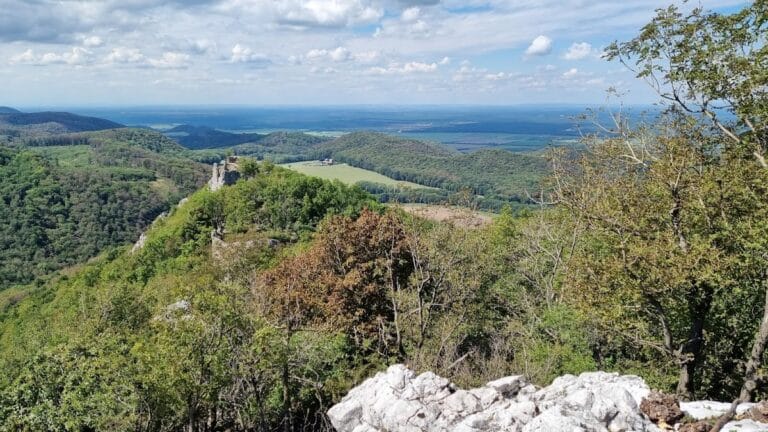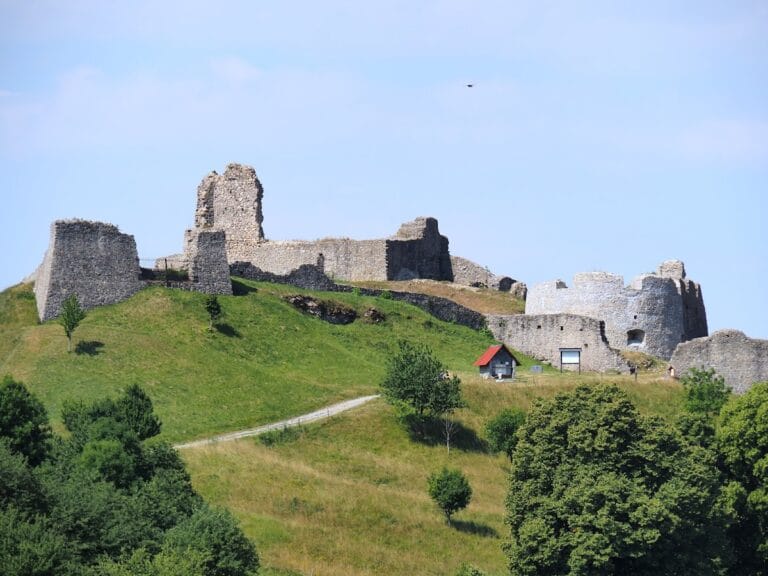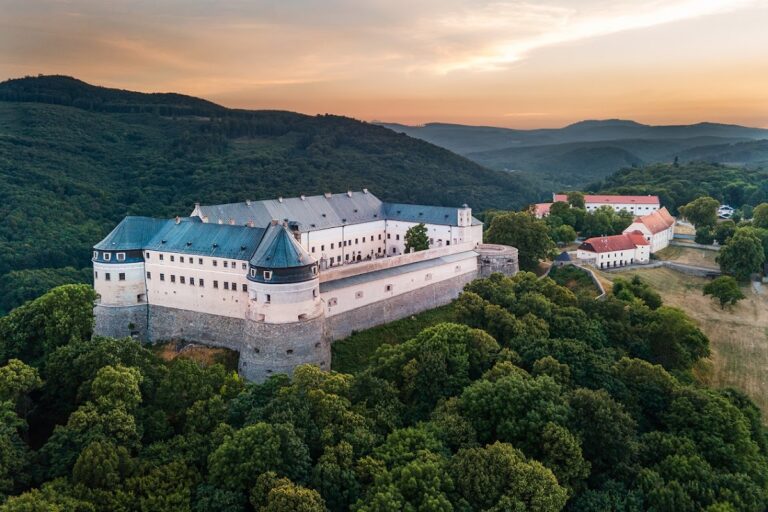Korlátka: A Gothic Castle Ruin in Slovakia
Visitor Information
Google Rating: 4.7
Popularity: Medium
Google Maps: View on Google Maps
Country: Slovakia
Civilization: Medieval European
Remains: Military
History
Korlátka is a Gothic castle ruin located above the village of Cerová in Slovakia. It was built in the latter half of the 13th century by local nobility to oversee and protect an important medieval trade route known as the “Česká cesta” or Czech Road.
The first written record of Korlátka dates back to 1298, confirming its existence by the end of the 13th century. While the exact builder is uncertain, historical evidence suggests it may have been founded by the influential magnate Matthew Csák, a powerful noble in the region during that period.
Ownership of the castle changed in 1394, when it passed to Stibor of Stiborice, a notable figure of the time, and later to his son, Stibor Stiboricz. During the early 15th century, amid the turbulence of the Hussite Wars, the castle came under the control of robber knights who used it as a stronghold. Their occupation ended around 1444 when citizens from nearby Bratislava expelled them.
From the late 15th century until 1772, the castle was held by the Korlátsky family. In 1645, troops led by George II Rákóczi captured the fortress. The castle again played a military role during the early 18th century when it was occupied by kuruc forces, rebels who fought against Habsburg rule during Rákóczi’s War of Independence in 1704.
After these events, Korlátka was abandoned in the mid-18th century. Over time, it fell into ruin, leaving only fragments of its former structure. Throughout its history, the castle was known by various names, reflecting its diverse cultural influences. These include Korlátsky hrad, Korlátko, Cerovský zámok, and, in German, Konradstein. Historical documents from 1324, 1399, and 1443 refer to the site under different versions of these names, attesting to its long-standing presence in the region.
Remains
Korlátka is situated on a hilltop in the Little Carpathians, overlooking the surrounding landscape to secure strategic views. The castle’s ruins reveal a layout typical of Gothic fortifications constructed during the medieval period. The surviving elements include parts of defensive walls built with masonry techniques common in the 13th century.
One of the distinct features of Korlátka is the remnant of a cylindrical tower, which is relatively uncommon in Slovak castles. This tower would have served as a lookout and strong defensive point. Though only fragments remain, its shape indicates advanced stonework and design for the period.
Besides defensive structures, sections of the castle’s palace have been preserved in part, suggesting residential or administrative functions. Near the outer bailey—an enclosed outer courtyard—the most intact building is the economic or “hospodárska” structure. This building once supported the daily functioning of the castle and remains considerably well-preserved compared to other sections.
Remains of the castle’s entrance gate are also visible, marking where access to the fortress was controlled. Various other portions of the outer walls survive, offering insight into the castle’s fortified perimeter. While the site contains masonry ruins, no inscriptions, decorative elements, or detailed measurements have been documented.
Historical records list several names for the castle, some of which reflect linguistic changes over time and the diversity of its former inhabitants. These attest to Korlátka’s role as a long-standing fortification guarding an important corridor through the region.







